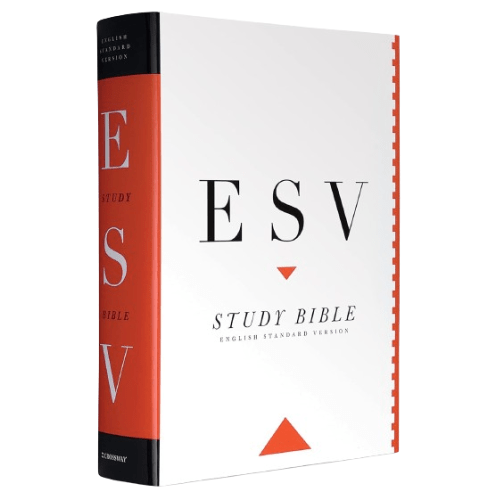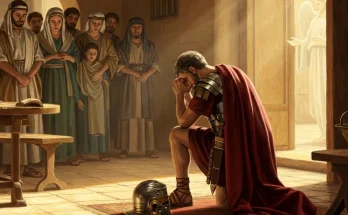What if the greatest threat to our faith isn’t outside the church—but already inside?
The book of Second Peter speaks directly to that possibility. Though short, this epistle packs a powerful punch. It urges us to grow in godliness, hold fast to truth, and remain alert. While the tone is urgent, the message is rich with hope.
Peter, knowing his time was short, gives us one final call: grow strong or be swept away. His words still echo today. In a world flooded with deception, compromise, and spiritual drift, we need his warnings more than ever.
As we explore the book of Second Peter, we’ll see how spiritual maturity shields us from lies. We’ll also rediscover the promise of Christ’s return—a bright hope that shapes how we live now.
Let’s walk through this letter together and learn what it means to stand firm in turbulent times.
Writer of the Book of Second Peter
The book of Second Peter opens with a clear claim: it’s written by Simon Peter, a servant and apostle of Jesus Christ (2 Peter 1:1). That’s a strong statement. It points directly to the same Peter who walked on water, denied Jesus, and later preached at Pentecost.
However, some have questioned this authorship. They point to differences in style between First and Second Peter. Still, early church leaders like Origen and Eusebius eventually affirmed it as authentic.
Even more, the letter reflects Peter’s life experience—his bold tone, his reference to the Transfiguration, and his awareness of coming death (2 Peter 1:14). These all align with what we know about him.
So while debates exist, the traditional view holds strong. We believe the apostle Peter wrote this final message with urgency, clarity, and deep pastoral care. And because of that, we lean in and listen closely.
Date Written
The book of Second Peter was likely written between A.D. 64 and 68, not long before Peter’s death.
We know this because Peter mentions that his departure is near (2 Peter 1:14). That points to the end of his life. According to tradition, he was martyred under Nero’s reign, around A.D. 67 or 68.
Also, when we compare this letter to the book of Jude, we notice strong similarities. Jude likely came first, which helps confirm the timing.
So, while we can’t pin down the exact year, the clues point us to Peter’s final days. That gives the letter a powerful sense of urgency. He wasn’t writing casually—he was giving us his last words.
Because of that, the book of Second Peter carries deep weight. It’s a farewell message from a faithful shepherd who wanted to strengthen the flock before his time was up.
The ESV Study Bible
The ESV Study Bible was designed to help us understand the Bible in a deeper way. Created by a diverse team of 95 leading Bible scholars and teachers, from 9 countries, nearly 20 denominations, and 50 seminaries, colleges, and universities.
To Whom Written
The book of Second Peter was written to believers who shared the same “precious faith” as the apostles (2 Peter 1:1).
While the audience isn’t named, it likely includes the same scattered Christians from Peter’s first letter—mostly Gentile believers in Asia Minor.
Peter isn’t just writing to one church. Instead, he speaks to a wide group of faithful followers facing subtle but dangerous threats.
They weren’t under attack from outside forces alone. False teachers had crept in, twisting truth and weakening hearts from within.
Because of that, the book of Second Peter feels incredibly personal. Peter is urging all of us who believe to stay grounded and grow deeper.
Even today, his words apply. Like them, we live in a time of confusion and compromise. And just like them, we need truth that anchors the soul and faith that holds fast.
Purpose of the Book of Second Peter
The book of Second Peter has a clear and urgent purpose. Peter writes with a shepherd’s heart, knowing his time is short.
First, he urges us to grow in godliness. We’re not meant to stay stuck in spiritual immaturity. Instead, we’re called to add to our faith—virtue, knowledge, self-control, and love (2 Peter 1:5–7).
Second, Peter boldly warns us about false teachers. These deceivers twist Scripture, exploit the weak, and lead many astray. Even worse, they deny the Lord who bought them. That’s why Peter doesn’t hold back.
Third, he reminds us that Jesus will return. Though scoffers may mock and doubt, the day of the Lord is coming. His delay isn’t weakness—it’s mercy.
Altogether, the book of Second Peter sounds a wake-up call. Grow in grace. Stand against deception. And live in light of eternity.
Peter isn’t just preaching—he’s protecting. And through his words, we’re still being shepherded today.
Historical Context of the Book of Second Peter
The book of Second Peter was written during a tense and dangerous time for the early church. Trouble was rising on every side.
From the outside, persecution was growing. The Roman Empire, under Nero, had become increasingly hostile toward Christians. Faith in Jesus came with real risk.
Yet, the greater danger came from within. False teachers had crept into the church, spreading destructive heresies and moral corruption. These weren’t outsiders—they claimed to be believers.
Many of these teachings reflected early forms of Gnosticism. Truth became twisted. Some claimed secret knowledge. Others taught that grace gave permission to sin.
Parables: The Mysteries of God’s Kingdom Revealed Through the Stories Jesus Told by John MacArthur
Because of this, Peter writes with deep urgency. He saw how these lies could destroy lives and shipwreck faith. He also knew that persecution plus confusion created the perfect storm.
At the same time, people were mocking the promise of Christ’s return. They said nothing had changed, so judgment would never come.
Against this dark backdrop, the book of Second Peter shines brightly. It calls us to grow in truth, not be tossed by trends. It reminds us that God’s promises are sure.
Even today, the pressures may look different—but the danger is still real. And so is the hope.
Key Themes in the Book of Second Peter
The book of Second Peter gives us a spiritual roadmap for standing firm in uncertain times. Each theme strengthens our faith and deepens our walk.
Spiritual Growth
Peter calls us to grow intentionally. We’re told to add to our faith—virtue, knowledge, self-control, perseverance, godliness, kindness, and love (2 Peter 1:5–7). Without growth, we become nearsighted and unfruitful. But with it, we become steady and effective.
Divine Revelation
God’s Word is not guesswork. Peter assures us that Scripture is a “light shining in a dark place” (2 Peter 1:19). It didn’t come from human ideas but from the Holy Spirit (1:21). This truth anchors us when false teachings rise.
Judgment on False Teachers
Chapter 2 delivers a bold warning. False teachers will come, denying truth and exploiting others. Their end is destruction, just like those in Noah’s day. Peter doesn’t sugarcoat it. Instead, he calls us to discern and reject deceptive voices.
Certainty of Christ’s Return
Scoffers will say, “Where is this ‘coming’ he promised?” (2 Peter 3:4). But Peter reminds us—God’s timing is perfect. The delay is mercy, not slackness. Christ will return. Judgment will come.
Holy Living
Since everything will be made new, how should we live? Peter says we should live holy and godly lives (3:11–14). Hope in Christ’s return fuels purity today.
Together, these themes form a spiritual defense. The book of Second Peter calls us upward—toward truth, maturity, and unshakable hope.
Major Events/Stories in the Book of Second Peter
The book of Second Peter may be a letter, but it includes vivid events that teach us lasting spiritual truths. Each moment is packed with meaning and purpose.
The Transfiguration of Christ
Peter reminds us that he was an eyewitness of Jesus’ majesty (2 Peter 1:16–18). He saw the Transfiguration with James and John. On that mountain, Jesus shone like the sun, and the Father’s voice thundered from heaven. This wasn’t a myth—it was real glory. That moment confirms the power and promise of Christ’s return.
Judgment in the Days of Noah and Lot
In chapter 2, Peter uses powerful Old Testament examples. God didn’t spare the ancient world in Noah’s time (2 Peter 2:5). He also turned Sodom and Gomorrah into ashes (2:6). Yet, in both cases, God rescued the righteous—Noah and Lot. These stories warn us of coming judgment but also reassure us of God’s care for His people.
The Day of the Lord and Cosmic Renewal
Peter describes a dramatic future. The day of the Lord will come like a thief (2 Peter 3:10). The heavens will disappear, and the earth will be laid bare. Yet, there’s hope—we look forward to a new heaven and new earth (3:13).
Through these stories, the book of Second Peter reminds us that God judges evil, protects the faithful, and will one day make all things new.
Theological Contributions in the Book of Second Peter
The book of Second Peter offers rich theology that shapes how we think, live, and grow in Christ. It’s not just information—it’s transformation.
Knowledge of Christ
Peter highlights the importance of truly knowing Jesus (2 Peter 1:2–3). This isn’t surface-level belief. It’s a deep, personal, and doctrinal relationship. As we grow in knowledge, we also grow in grace, stability, and purpose.
Scripture’s Origin
One of the clearest teachings on inspiration appears here. Peter tells us that prophecy never came by human will (2 Peter 1:20–21). Instead, men spoke from God as they were carried along by the Holy Spirit. This reminds us that the Bible is fully trustworthy.
Eschatology
The letter gives strong insight into the end times. Christ’s return is certain, though delayed in mercy (3:9). The heavens and earth will one day be renewed (3:13). This future hope shapes present holiness.
Sanctification
Peter teaches that growth is the evidence of true calling. We confirm our election by increasing in godly character (1:10). Spiritual stagnation, on the other hand, leaves us vulnerable.
Judgment of Apostasy
Rejecting truth after knowing it leads to severe consequences (2 Peter 2:20–22). Peter compares it to a dog returning to its vomit. That’s graphic—but it’s meant to stir our hearts.
Altogether, the book of Second Peter deepens our theology and sharpens our ethics. We’re not just learning truths—we’re being shaped by them.
Special Consideration in the Book of Second Peter
The book of Second Peter comes with a few unique challenges. Early on, some in the church hesitated to accept it fully.
Why? Mainly because it sounds different from First Peter. The writing style and vocabulary shift noticeably, which raised questions of authorship.
However, the internal evidence remains strong. The letter claims to be from “Simon Peter,” an eyewitness of Jesus’ majesty (2 Peter 1:1,16). It also reflects Peter’s personality, experience, and pastoral concern.
Another important link is its connection to the book of Jude. The two letters share several themes and even similar wording, especially in their warnings about false teachers. This overlap supports the authenticity of both.
Eventually, church leaders affirmed Second Peter as part of Scripture. Though it entered the canon later than some books, it was never rejected outright.
Today, we receive the book of Second Peter with confidence. It speaks with clarity, authority, and consistency—calling us to truth, growth, and hope.
Final Thoughts on the Book of Second Peter
The book of Second Peter closes with one powerful command: Grow in the grace and knowledge of our Lord and Savior (3:18).
That’s not just a suggestion—it’s a lifeline. Growth protects us from error. It keeps us anchored when the winds of deception blow.
Peter knew what was coming. He saw false teachers rising and truth being twisted. Yet, he didn’t panic. He pointed us back to Christ.
Because of that, the book of Second Peter still speaks clearly today. It urges us to pursue holiness while the world chases compromise.
It reminds us that Jesus will return, even if scoffers say otherwise. And until that day, we’re called to live with purpose and purity.
So let’s take Peter’s words to heart. Let’s keep growing. Let’s stay alert. And let’s fix our hope fully on what’s to come.
Grace and knowledge—those are the keys.
Frequently Asked Questions (FAQ) Book of Second Peter
1. Who wrote the book of Second Peter? The apostle Simon Peter is identified as the author (2 Peter 1:1). Despite early doubts, the early church later affirmed his authorship.
2. Why did Peter write this letter? Peter wrote to encourage spiritual growth, warn against false teachers, and remind believers of Christ’s promised return.
3. What makes the book of Second Peter unique? It offers one of the clearest teachings on Scripture’s divine inspiration (2 Peter 1:20–21) and delivers strong warnings against apostasy.
4. How does Second Peter relate to the book of Jude? They share many warnings and similar language about false teachers. Most scholars believe one letter influenced the other—likely Jude borrowing from Peter.
5. What is the main message of the book of Second Peter? Grow in grace, cling to truth, and live in hope. Peter’s final words call us to remain faithful until Christ returns.




